A novel flexible plasma array for large-area uniform treatment of an irregular surface
Baowang LIU (刘保旺), Fei QI (岂菲), Dejiang ZHOU (周德江),Lanlan NIE (聂兰兰), Yubin XIAN (鲜于斌) and Xinpei LU (卢新培)
State Key Laboratory of Advanced Electromagnetic Engineering and Technology,Huazhong University of Science and Technology, Wuhan 430074, People’s Republic of China
Abstract In this work, we demonstrate a flexible multi-pin plasma generator with movable electrodes,which can change the shape of the electrode array freely,and then provide a large-area uniform plasma for the treatment of surfaces of different shapes.Discharge characteristics including U–I waveforms and discharge images and sterilization performance under three different electrode configurations (flat–flat, flat–curve, curve–curve) are investigated.Very similar results are acquired between the flat–flat configuration and the curve–curve configuration, which is much better than that under flat–curve configuration.This flexible multi-pin plasma generator offers a simple method to treat different irregularly shaped surfaces uniformly with a single device.Moreover, this device provides a foundation for developing a self-adaption large-scale uniform plasma generator by further introducing automatic adjustment of the position of every electrode driven by motors with discharge current feedback in the following study.Thus it will promote the applications of atmospheric-pressure cold plasmas significantly.
Keywords: flexible multi-pin electrode, large-area uniform plasma, sterilization
1.Introduction
Due to the characteristics of high chemical activity and low temperature, there is an increasing interest in the application of atmospheric-pressure nonequilibrium plasma (APNP) in energy conversion[1–3],decontamination[4–6],biomedicine[7–10], materials [11, 12], etc.In practical applications, in order to improve the processing efficiency, it is of great significance to generate large-area uniform plasmas.
There are two main ways to obtain large-area plasma:one of them is large-area discharge, i.e., large-area dielectric barrier discharge (DBD), and the other is to use multiple plasma units to form a plasma array.Wang et al reported a stable air surface barrier discharge device,which can generate visually uniform plasmas with the electrode area scaled up to the required size conveniently [13].Ponizovskiy et al proposed a novel nanosecond pulsed streamer corona discharge plasma generator, which consists of coaxially arranged high-voltage multi-pointed and grounded tubular electrodes [14].Tanakaran et al studied the influence of atmospheric nonthermal plasma generated by a multi-pin plasma generator on the enhancement of rice seeds [15].Liu et al built a corona discharge system with array electrodes for the rapid sterilization of a resistant pathogen [16].Li et al developed a highly cost-efficient large-scale uniform plasma jet array for high performance in material processing and plasma medicine [17].Zheng et al offered a proof of concept on a novel multi-pin atmospheric normal glow discharge plasma-enhanced chemical vapor deposition method for the uniform growth of oriented graphene nanosheets [18].
Although a large number of large-scale plasma sources are developed and applied,all of them are only suitable for flat surfaces.For a curved surface, the plasma array has to be customized to fit the surface, otherwise the plasma treatment will be nonuniform.This drawback limits the applications of large-scale plasma arrays significantly.In this work, a novel multi-pin electrode plasma generator with a flexible surface is developed, in which the position of the electrodes can be adjusted flexibly according to the shape of the objects to be treated.The characteristics of plasma are diagnosed and efficient sterilization is obtained.
2.Experimental setup and methods
Figure 1 shows the schematic of the atmospheric-pressure flexible multi-pin plasma generator.It consists of an acrylonitrile butadiene styrene (ABS) plastic frame (70 mm×60 mm×2 mm, two-layer), carbon steel pin electrodes(50 mm long, 2 mm diameter, 0.5 mm tip diameter), pearl cotton and ballast resistors.The ABS plastic frame includes 13×12 holes,whose diameters are 2.1 mm,and the distance between two adjacent holes (Gp) is ~5 mm.Gpis an important parameter which impacts on the uniformity of the plasma.Ideally, the electrodes should be put as close as possible to each other,so that the plasma generated by each pin overlaps to produce a large-scale uniform plasma.In this work, since the device is hand-made,the size of every unit in the array is~3 mm.In order to provide enough space for every unit to move flexibly, a 5 mm distance is adopted.The gap between the two-layer ABS plastic frames is 10 mm and is filled with pearl cotton to increase friction and stop unwanted movement of the electrodes.The steel pins are placed into these holes as electrodes.Because every pin electrode can move flexibly,the plasma generator can change its shape conveniently to fit the surface to be treated and then generate uniform plasma.The plasma generator can operate in different gases.In this work,the experiment is carried out in ambient air.
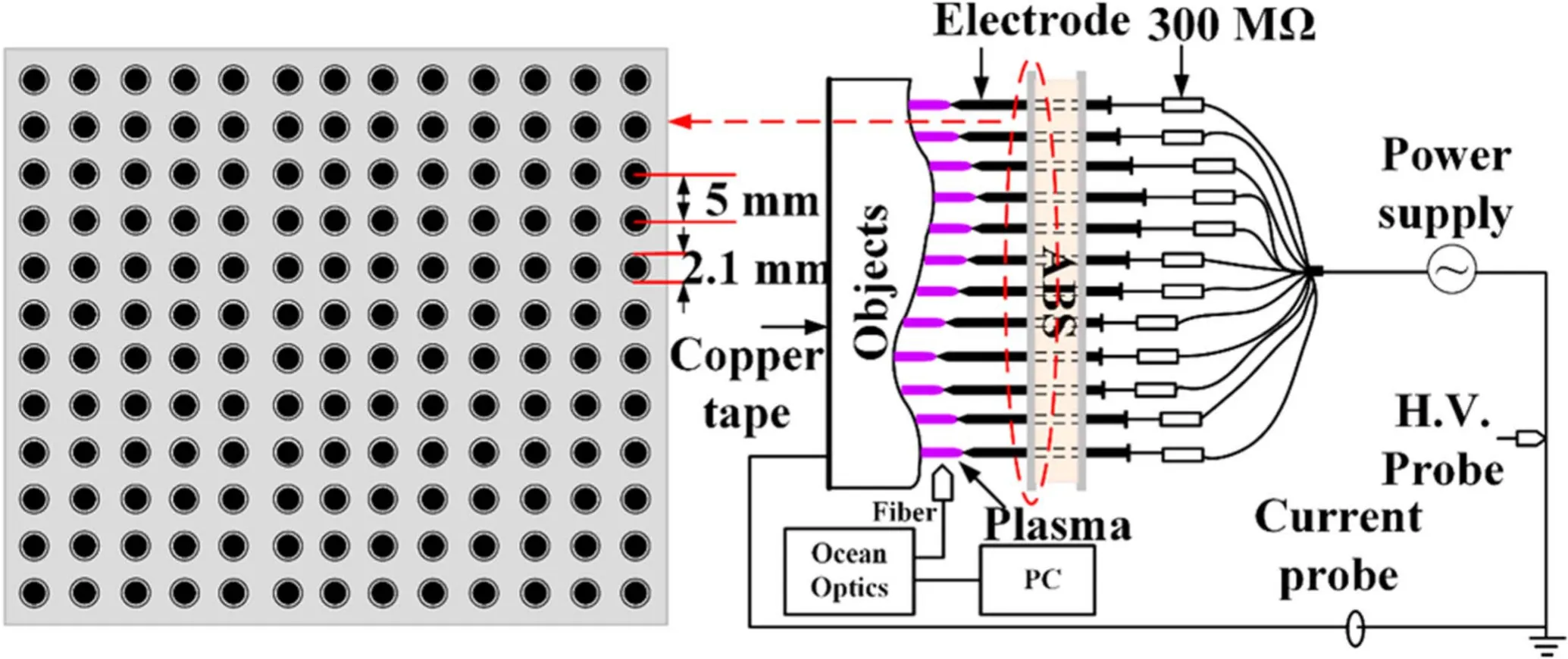
Figure 1.Schematic of the experimental setup.
When using the flexible multi-pin plasma generator to treat an irregular surface, firstly, push the pin electrodes out of the frame as far as possible.Secondly, move the pin electrodes close to the surface until the tips of all the pins get to the surface.Thirdly,move the plasma generator away from the surface by a certain distance.In this work,the distance is 4 mm.Lastly, turn on the plasma to treat the surface.
In this work, the grounded electrode has two configurations as shown in figures 2 and 3.In figure 2, a transparent grounded electrode is used for obtaining the discharge images.A quartz container is filled with grounded sodium chloride (AR, Sinopharm Chemical Reagent Co., Ltd) aqueous solution.The configurations shown in figure 3 are used in a sterilization experiment.The copper tape is pasted to the bottom of the quartz glass(3 mm thick)as a ground electrode.The Escherichia coli (E.coli) is inoculated on the top side of the quartz glass for plasma treatment.The distance between pin electrodes and the quartz glass is 4 mm in figures 2(a),(c),(e)and 3(a),(c).In figures 2(b), (d) and 3(b), since the distance between the pin electrodes and the quartz glass varies at different positions,the distance in the area in which the pin electrode is closest to the quartz glass is 4 mm.
Figures 2(a)and 3(a)show the ideal situation in which both of the treated objects and plasma generator are flat,so the plasma generator can provide uniform plasma.Figures 2(b),(d)and 3(b)show the general situation,when the shape of the treated objects is irregular.The irregular object used in figures 2(b) and 3(b) is quartz glass with a radius of curvature of 10 cm, and that in figure 2(d) is a plano-convex lens.The diameter of the plano-convex lens is 150 mm, the edge thickness is 5 mm, and the center thickness is 15 mm.With a flat plasma generator, it could not provide uniform plasma.Figures 2(c), (e) and 3(c)show the fitted situation with a flexible multi-pin plasma generator to treat an irregular surface that is the same as that in figure 3(b).

Figure 2.Grounded electrode configurations to obtain discharge images.(a) Configuration A: flat–flat, (b) configuration B: flat–curve, (c)configuration C: curve–curve, (d) configuration D: flat–curve, (e) configuration E: curve–curve.

Figure 3.Grounded electrode configurations for sterilization.(a)Configuration F:flat–flat,(b)configuration G:flat–curve,(c)configuration H: curve–curve.
An AC high voltage (CTP-2000K, Suman Plasma Technology Co., Ltd, Nanjing, China) at 1 kHz was applied on the 300 MΩ ballast resistors to generate plasma.The voltage on the electrodes and the total discharge current were measured by a high-voltage probe (Tektronix P6015A) and a current probe(Tektronix TCP312A) respectively.
The optical emission spectra (OES) of the plasma were recorded in the range of 200–1000 nm with a spectrometer(Ocean Optics HR2000+) at a 500 ms integration time, in which the optical fiber detector was placed at 5 mm in front of the tips of the pin electrodes.A camera was placed against the left side of the transparent grounded electrode to acquire the imaging of discharge with the configurations shown in figure 2.
To demonstrate the biomedical application of the flexible multi-pin plasma generator, standard E.coli (ATCC 25922),which is ubiquitous in daily life, was treated.A certain amount of E.coli was inoculated into sterile tryptic soy broth(TSB, Beijing San Yao Science & Technology Development Co) and placed in a shaking bed to activate at 37°C for 24 h while being shaken at 200 rpm.
Three configurations shown in figure 3 were used to treat bacteria seeded on the surface of quartz glass.100 μl of a fresh culture containing bacteria was spread on sterile quartz glass and treated for different times.After being treated with plasma, the quartz glass was placed into the bottom of a container, and then the treated glass was rinsed with 30 ml distilled water and soaked for 15 min, ensuring all bacteria were removed from the quartz glass into distilled water.Then the distilled water with bacteria was diluted to a certain multiple so that the number of colonies on the medium was between 20 and 200.Finally, 100 μl of the diluted solution was spread on a TSB–agar plate and incubated at 37 °C for 12 h.Two control groups were set for each sample to prevent random errors.The same operation process was supplied to the other group which had not undergone plasma treatment.
To quantify the concentration reduction of bacteria, we imaged the TSB–agar plates after 12 h growth and counted the number of colony-forming units (CFUs).The bacterial load in CFU/ml was calculated by multiplying the CFU count by 301 (100 μl original bacterial load diluted by 30 ml distilled water),10(convert CFU/100 μl to CFU/ml)and the diluted times (shown in figure 8).
3.Experimental results and discussion
3.1.Plasma characteristics
Figure 4 shows the images and electrical waveforms of the plasma generated by the three configurations shown in figures 2(a)–(c).When the flat plasma generator is used to treat a flat surface, as shown in figure 4(a), all of the electrodes discharge at a similar intensity.Thus,the plasma array is uniform.The U–I waveform shown in figure 4(b) demonstrates that the discharge current is always positive.We carried out further research on the discharge current and found that the current was not always positive.With a higher applied voltage or different dielectric, negative current was observed.When the applied voltage is over 30 kV, negative discharge current is detected.When the dielectric material on the ground electrode is replaced by ceramic or plexiglass,negative current appears at a lower applied voltage and has a larger magnitude.However, the negative current is always much lower than the positive one.As explained in[19–22],in the positive half-cycles, electrons quickly reach the multi-pin electrodes and positive ions are left in space, leading to a strong electric field and lots of secondary avalanches to ignite streamer discharge.In contrast, in the negative half-cycles,the electric field is reduced by residual positive ions in the discharge gap, thus the negative streamers are weakened.
Figures 4(c) and (d) present the image and electrical waveforms of the plasma generated by a flat plasma generator against an irregular surface with configuration B shown in figure 2(b).It can be seen that when the applied voltage is 25 kV, the plasma only appears at the edge of the device.Increasing the applied voltage to 30 kV, although the discharge area is extended, it is still unable to achieve a completely uniform discharge as shown in figure 4(a).The discharge current shown in figure 4(d) has much higher peak values but fewer pulses than that shown in figure 4(b).The waveform of the current agrees with the photograph of the discharge.It demonstrates that it is very difficult to generate a uniform plasma array on a curved surface with a flat plasma generator.
Figures 4(e) and (f) show the image and electrical waveforms of the plasma generated by the flexible multi-pin plasma generator against a curved surface with configuration C shown in figure 2(c).Because the position of every pin electrode can be adjusted flexibly, it can ensure that the distance between each tip and the surface is 4 mm.It can be found that the image and the current waveform of the plasma generated by this configuration are very similar to that shown in figure 4(a).Plasmas are generated by every electrode at a similar intensity.Thus, a uniform treatment can be expected.
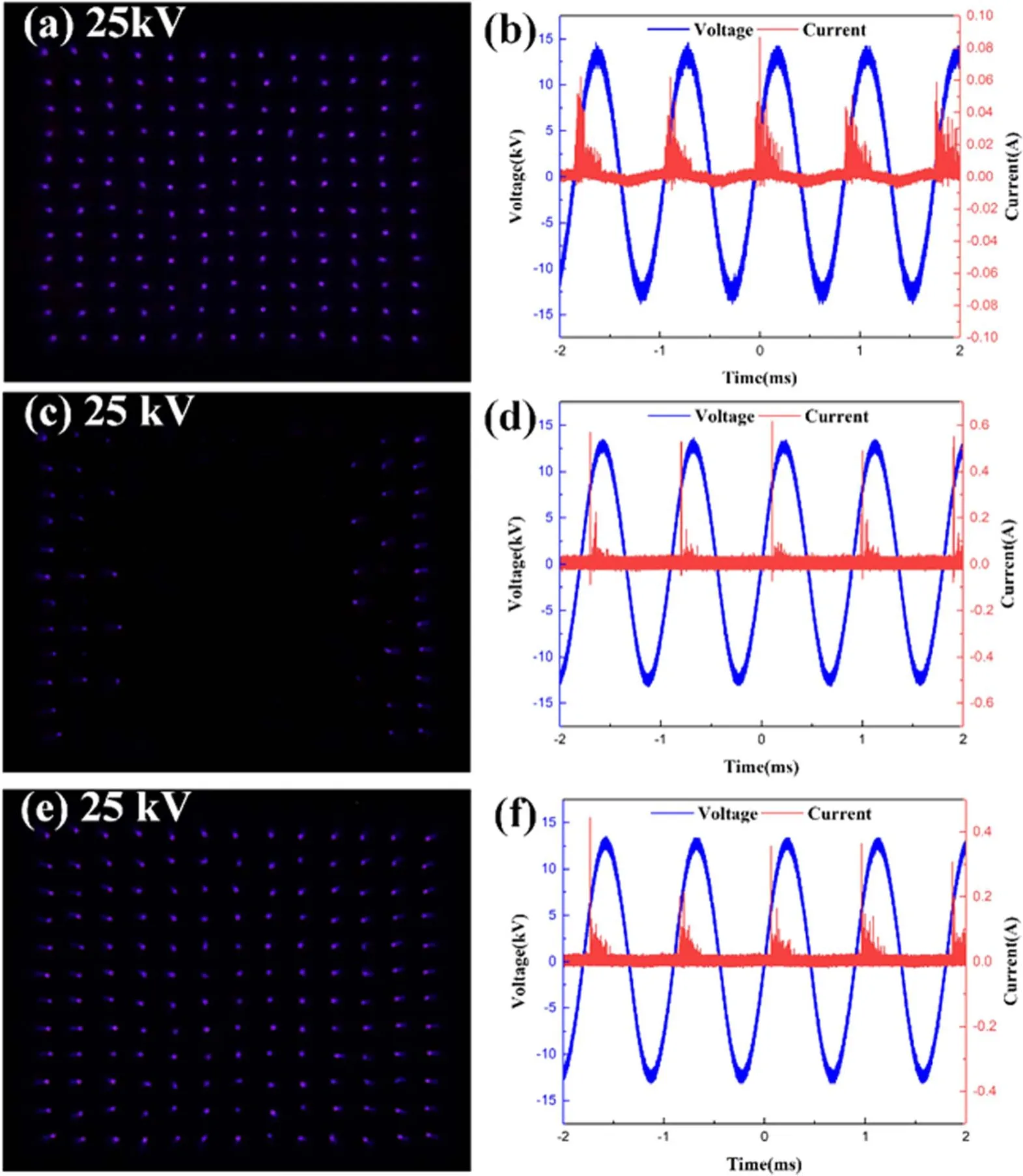
Figure 4.Discharge images and U–I waveforms for the configurations shown in figure 2.(a),(b)use configuration A of figure 2(a).(c),(d)use configuration B of figure 2(b).(e), (f) use configuration C of figure 2(c).The plasmas are driven by an AC high voltage of 25 kV at 1 kHz.
Figure 5 shows the discharge images of the plasmas generated by the plasma generator against a plano-convex surface with configurations D and E shown in figures 2(d)and(e).It can be found that the nonuniform thickness of the dielectric has a significant negative influence on the uniformity of the plasma.In the area with thick dielectric (the center of the array), the discharge is weaker in the situations of both figures 2(d) and (e).However, compared with the fixed multi-pin anode plasma generators,the uniformity of the plasma generated by the flexible multi-pin anode plasma generator is much better.It indicates that despite the influence of the thickness of the dielectric,the flexible multi-pin plasma generator benefits for the uniformity of the plasma array.
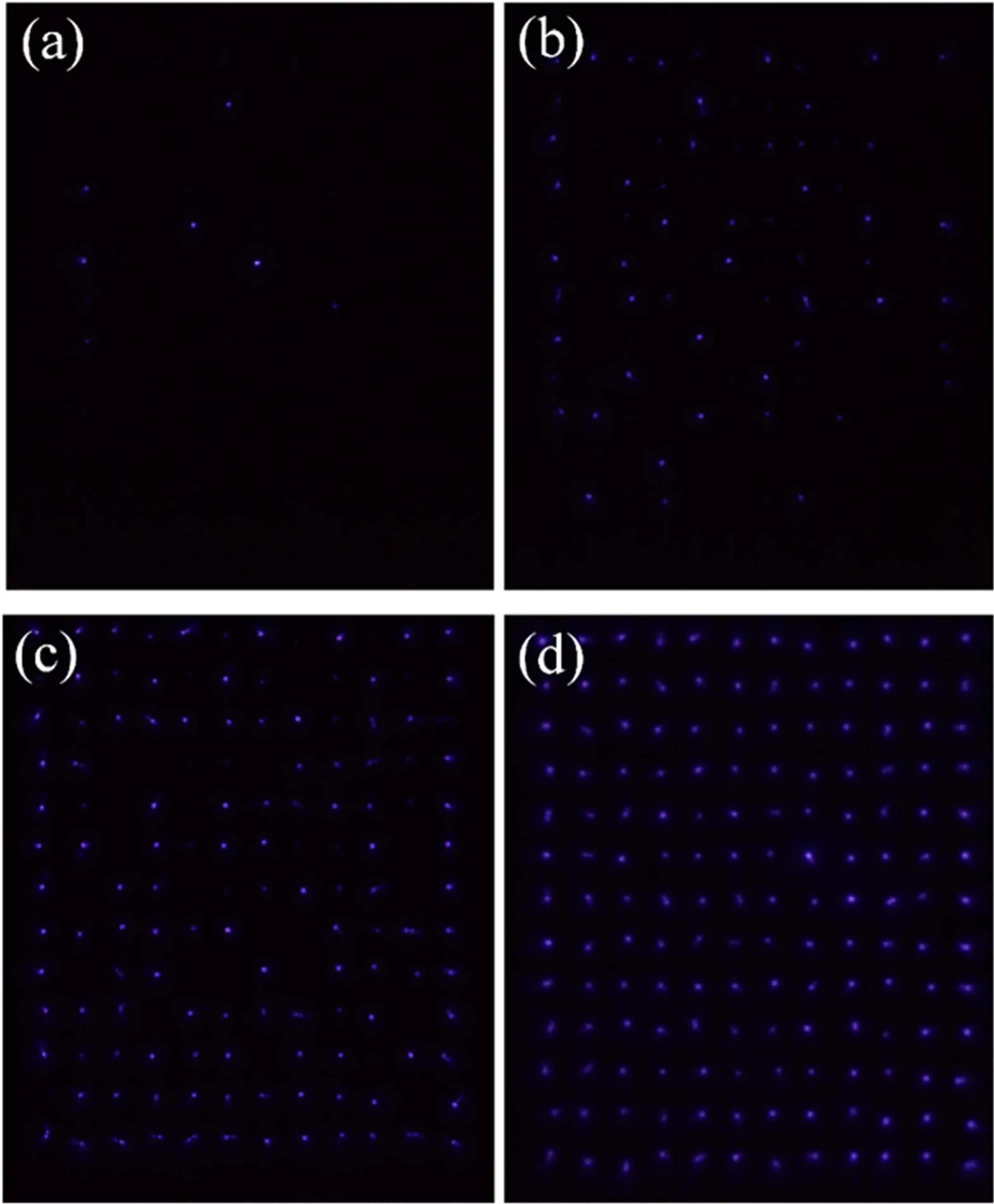
Figure 5.Discharge images for the configurations shown in figures 2(d) and (e).(a), (b) use configuration D of figure 2(d).(c), (d) use configuration E of figure 2(e).The plasmas are driven by an AC high voltage of (a), (c) 20 kV and (b), (d) 25 kV, respectively.
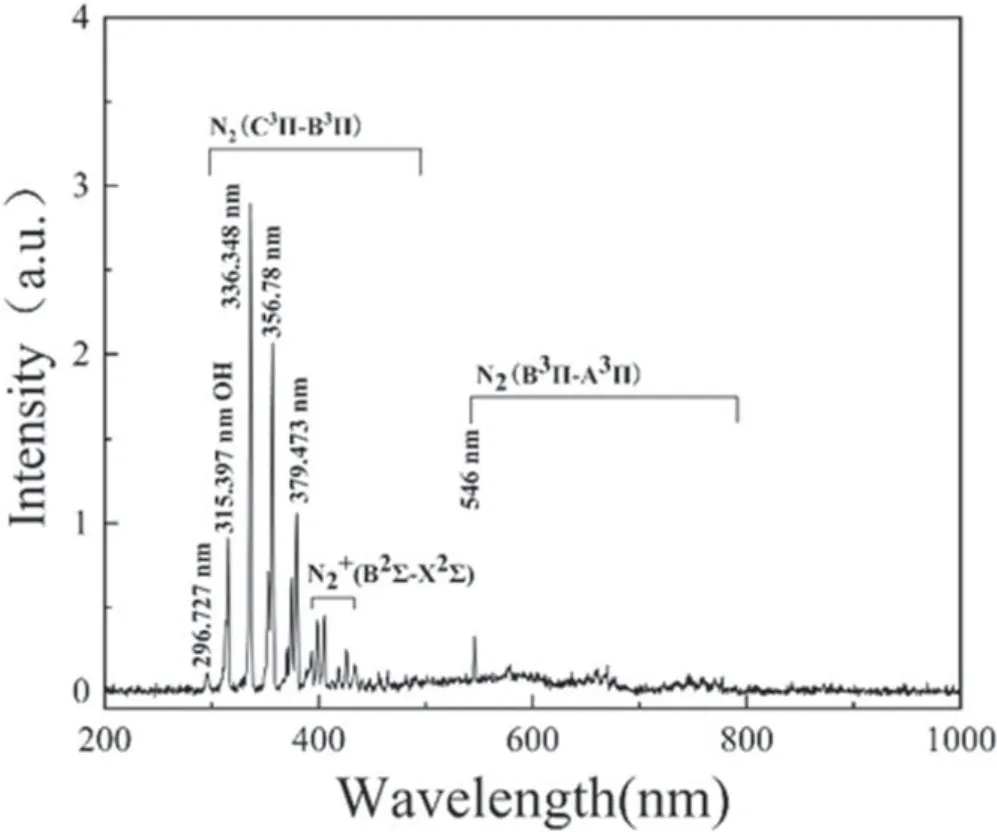
Figure 6.OES of the flexible multi-pin plasma generator operating at 25 kV with configuration C shown in figure 2(c).
Moreover, by adjusting the positions of the electrodes,the strength of the discharge generated by every electrode can be equal.Although the artificial adjustment is not practical because it is slow and dangerous, automatic adjustment driven by motors with current feedback will provide a perfect solution despite the shape, thickness or material of the object to be treated.Therefore, the flexible multi-pin plasma generator developed in this work provides a foundation for producing self-adaption large-scale uniform plasmas.This is the most significant contribution of this work.
The reactive species play a significant role in most of the applications of cold plasma,thus the OES were acquired with configuration C as shown in figure 2(c)to analyze the reactive species produced by the flexible multi-pin plasma generator.As shown in figure 6, the spectrum is dominated byN2emission.The reactive oxygen species are mainly hydroxyl radicals,which are the highest oxidizer and can react with cell membranes [23].The reactive nitrogen species consist of excitedN2and the ionized nitrogen moleculesN+2.
The gas temperature between the electrodes and quartz glass is measured by a thermometer.It is found that the temperature does not exceed 50°C.Thus,this flexible multipin plasma source is suitable for the treatment of most materials and biomedical applications.
3.2.Sterilization
In order to evaluate the applications of the flexible multi-pin plasma source, the effect on disinfection of E.coli is examined as an example.Figure 7 presents the sterilization of E.coli with the three configurations shown in figure 3.The original concentration of bacteria is measured to be ~109CFU/ml.With configuration F, the uniform plasma deals with E.coli efficiently(figure 7(a)).After 1 min of treatment,the concentration of bacteria is reduced by an order of magnitude.When the processing time increases to 2 min, the concentration of bacteria is reduced to 107CFU/ml.After 5 min of treatment, the bacteria is completely inactivated.This is consistent with the experimental results of other researchers using ordinary array electrodes for sterilization,which can reach a sterilization efficiency of more than 99%within 5 min of plasma treatment [16, 24].
With the configuration G, even if the quartz glass inoculated with E.coli is treated for 5 min, the concentration of bacterial is just reduced by about an order of magnitude(figure 7(b)).From figure 4(c)we can see that when using an ordinary fixed multi-pin plasma generator to treat irregularly shaped objects, it is difficult to provide a large-area uniform plasma.Therefore, inevitably there will be some areas that cannot be treated [15, 25, 26].With configuration H, when treated by plasma for 1 min, 2 min and 3 min, the concentration of bacteria is reduced to 108CFU/ml,107CFU/ml and ~105CFU/ml, respectively.When it is treated by the plasma for 5 min,the bacteria inoculated on the quartz glass is killed completely.This result is similar to experiments in the ideal situation, that is, using an ordinary array electrode device to treat planar objects[27],and is better than that for a multi-electrode DBD plasma source[28].Though the plasma jet can reach a much higher sterilization efficiency,which can kill 99% of bacteria within 60 s [29], it has difficulty improving the processing area.It should be noted that the disinfection of E.coli is not caused by the high gas temperature since the gas temperature is measured to be lower than 50 °C [30].
Figure 8 shows the comparison of sterilization effects under different configurations.It can be seen that using the flexible multi-pin electrode to treat irregularly shaped objects almost obtains the same bactericidal efficacy as using an ordinary array electrode to treat flat objects.However, the effect of using an ordinary array electrode to treat irregularly shaped objects is very poor.This result proves that the flexible multi-pin plasma generator presented in this work generates large-area uniform plasmas on objects with different shapes and ensures high sterilization efficiency.
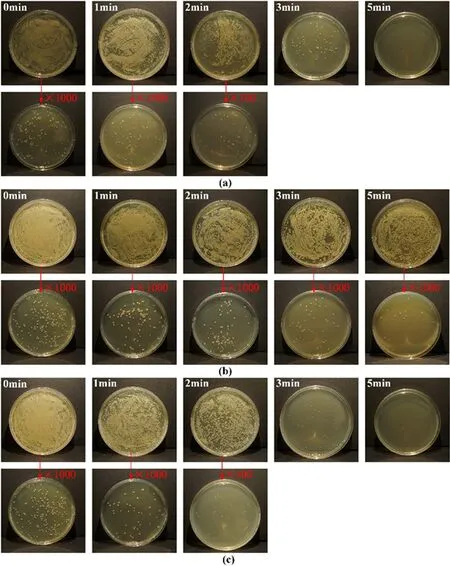
Figure 7.Bacteria in the culture medium after plasma treatment under different grounded electrode configurations.(a) Configuration F, (b)configuration G, (c) configuration H.The×in the labels stand for dilution.

Figure 8.Sterilization effects with different configurations.
4.Conclusion
In this study,we present a flexible multi-pin plasma generator with movable electrodes.Due to the novel design, the shape of the electrode array is free to change to fit the surface to be treated.Thus, it can provide a large-area uniform plasma on objects with irregularly shaped surfaces.The characteristics of the discharge are examined to be very similar to those of the discharge with a conventional flat electrode array against a flat surface.The E.coli sterilization performance is also evaluated to be the same,which is much better than that for a nonuniform plasma array.Therefore,this novel flexible multipin plasma generator can provide a large-area uniform plasma for the treatment of various irregularly shaped objects.More importantly, if the strategy of automatic adjustment of the position of the electrodes by motors controlled with discharge current feedback is further developed based on this device,self-adaption large-scale uniform plasmas can be generated despite the shape, thickness or material of the object to be treated.This is the most significant contribution of this work.
ORCID iDs
 Plasma Science and Technology2022年3期
Plasma Science and Technology2022年3期
- Plasma Science and Technology的其它文章
- A brief review: effects of resonant magnetic perturbation on classical and neoclassical tearing modes in tokamaks
- A classical relativistic hydrodynamical model for strong EM wave-spin plasma interaction
- Analysis of inverse synthetic aperture radar imaging in the presence of time-varying plasma sheath
- Analysis of the influence of sheath positions,flight parameters and incident wave parameters on the wave propagation in plasma sheath
- Transmission characteristics of terahertz Bessel vortex beams through a multi-layered anisotropic magnetized plasma slab
- Measurement and analysis of species distribution in laser-induced ablation plasma of an aluminum–magnesium alloy
